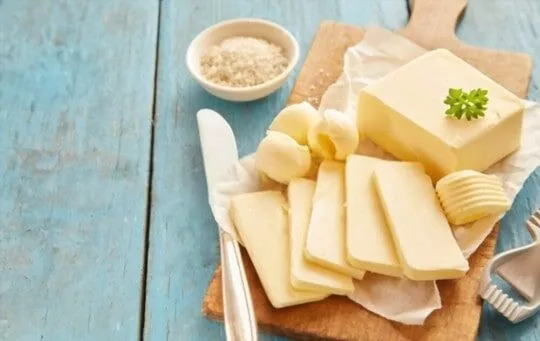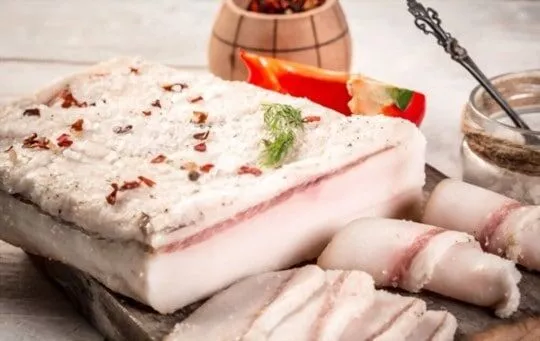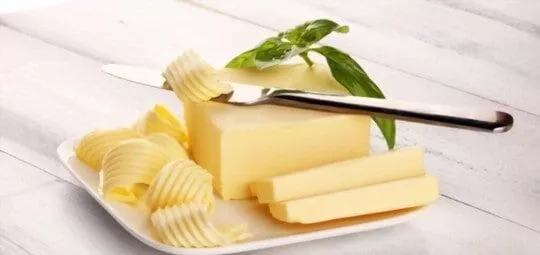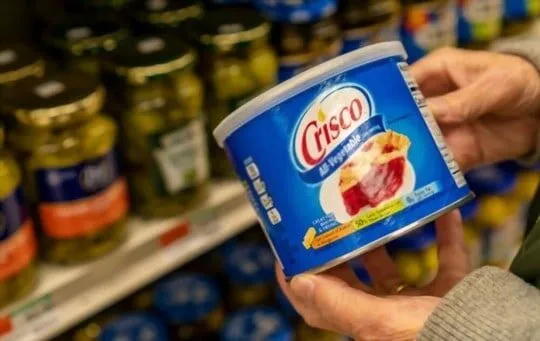Dumplings are a delicious and comforting food enjoyed by many cultures around the world.
They can be made with a variety of fillings and doughs, but one ingredient often used in their preparation is shortening.
This fat provides tenderness and flakiness to the dumplings, making them a delightful treat.
But what if you don’t have shortening on hand or are looking for a healthier alternative?
What are the best substitutes for shortening in dumplings? The best substitutes for shortening in dumplings include butter, lard, margarine, coconut oil, and vegetable oil. Each of these alternatives can provide a similar texture and flavor to your dumplings, without compromising their deliciousness.
Whether you’ve run out of shortening, are on a specific diet, or are simply looking for new ways to experiment with your dumpling recipes, we’ve got you covered!
Let’s explore the five best substitutes for shortening in dumplings and how to use them in your recipes.
- The 5 Best Substitutes for Napa Cabbage in Dumplings
- The 5 Best Substitutes for Baking Powder in Dumplings
- The 5 Best Substitutes for Suet in Dumplings
What Is Shortening?

Shortening is a type of fat that is solid at room temperature and used in baking and cooking.
It is typically made from vegetable oil, such as soybean or cottonseed oil, that has been hydrogenated to make it more stable and solid.
The hydrogenation process also makes the oil more resistant to spoiling and rancidity, which gives shortening a longer shelf life than other types of fats.
Shortening is commonly used in baking to create a tender and flaky texture in pastries, cakes, and biscuits.
It is also used in frying to create a crispy coating on foods, such as fried chicken or doughnuts.
Shortening has a neutral flavor and a high smoke point, which makes it ideal for high-heat cooking methods.
However, shortening is also high in trans fats, which have been linked to an increased risk of heart disease.
Because of this, many people are looking for healthier alternatives to shortening in their cooking and baking.
Substitutes such as butter, lard, margarine, coconut oil, and vegetable oil can be used in place of shortening to achieve a similar texture and flavor in recipes.
The 5 Best Substitutes for Shortening in Dumplings
Shortening is a popular ingredient in dumplings, but it’s not always easy to find.
Fortunately, there are other options that can be used in its place. Here are five great substitutes for shortening in dumpling recipes:
1 – Butter

Butter, a favorite ingredient worldwide, is known for its rich flavor and smooth, creamy texture.
An ideal option for replacing shortening in dumplings, butter incorporates effortlessly into various dough recipes, creating tender and flaky results.
When using butter as a substitute, ensure it is cold and cut into small pieces to easily blend with the rest of the ingredients.
This method helps create pockets of air in the dough, resulting in lighter, flakier dumplings.
In addition to its textural benefits, butter imparts a delectable, buttery taste to your dumplings, making it a delicious option for shortening substitutions.
2 – Lard

Lard, a classic culinary ingredient, is derived from rendered pork fat and has been celebrated for its unique properties and versatile uses.
Its high smoking point and ability to produce tender, flaky results make it a popular choice in baking.
When replacing shortening in dumplings, lard brings the same qualities while adding a subtle, savory flavor.
Use cold lard in a similar manner as cold butter—cut into small bits and incorporate it into your dough recipe.
Opting for lard not only preserves the texture and structure of your dumplings, but also serves as a natural alternative to commercially-produced shortening.
3 – Margarine

Margarine, a plant-based alternative to butter, has gained popularity for its affordability and accessibility.
Made from vegetable oils, margarine boasts a soft and easy-to-blend texture, making it a suitable replacement for shortening in dumpling recipes.
When using margarine, ensure it is cold and equally distributed throughout the dough to achieve a uniform, flaky texture.
Though it lacks the rich, buttery flavor of its dairy counterpart, margarine still imparts a pleasant taste to your dumplings.
With its versatility and widespread availability, margarine serves as a reliable and budget-friendly option for those seeking a shortening substitute in their dumplings.
4 – Coconut Oil

Coconut oil is a versatile and flavorful alternative to shortening in dumplings, offering a variety of culinary benefits.
This plant-based oil is extracted from the meat of ripe coconuts, providing a slightly sweet, tropical flavor profile.
Its high smoke point and solid-at-room-temperature texture make it an excellent choice for various cooking applications, including pastry making, frying, and sautéing.
When used in dumpling recipes, coconut oil lends a light, flaky texture to the dough and imparts a subtly sweet taste that complements both sweet and savory fillings.
This natural, vegan-friendly option is a fantastic choice for those seeking an alternative to traditional shortening, while still maintaining the desired texture and flavor in their homemade dumplings.
5 – Vegetable Oil

Vegetable oil is a popular and widely accessible substitute for shortening in dumpling recipes.
Typically a blend of several plant-based oils, vegetable oil boasts a neutral flavor profile, making it suitable for a variety of culinary applications.
Its high smoke point and smooth texture help create a tender, pliable dough for dumplings, ensuring consistent results in your cooking.
To replace shortening with vegetable oil in your dumpling recipe, use a 3:4 ratio (3 parts vegetable oil for every 4 parts shortening required).
Using vegetable oil not only offers a convenient and affordable alternative to shortening, it also ensures a delicious, tender, and satisfying dumpling experience for everyone to enjoy.
Frequently Asked Questions (FAQs)
- What can I use if I don’t have shortening? If you don’t have shortening on hand, there are several substitutes that you can use in your recipes. Some of the best alternatives to shortening include butter, lard, margarine, coconut oil, and vegetable oil.
- Can you use butter instead of shortening to make dumplings? Yes, you can use butter instead of shortening to make dumplings. Butter can provide a similar texture and flavor to shortening, and can be used in equal amounts in most recipes. Keep in mind that using butter may result in a slightly different texture and flavor than using shortening, but it can still be a delicious alternative.
- What can I use instead of lard in dumplings? If you don’t have lard on hand or are looking for a healthier alternative, there are several substitutes that you can use in your dumpling recipes. Some of the best alternatives to lard include butter, margarine, coconut oil, and vegetable oil. Each of these substitutes can provide a similar texture and flavor to lard, without compromising the taste of your dumplings.
Conclusion
In conclusion, while shortening is a common ingredient in many baked goods and fried foods, it is also high in trans fats and may not be the healthiest option.
Fortunately, there are several alternatives to shortening that can be used in cooking and baking, including butter, lard, margarine, coconut oil, and vegetable oil.
Each of these substitutes can provide a similar texture and flavor to shortening, while also offering their own unique health benefits.
By experimenting with these alternatives, you can create delicious and healthy dishes without sacrificing taste or texture.

The 5 Best Substitutes for Shortening in Dumplings
Ingredients
- Butter
- Lard
- Margarine
- Coconut Oil
- Vegetable Oil
Instructions
- Pick your favorite substitute from the list above.
- Follow cooking directions for your selected substitute with the proper ratio of ingredients.
Jenny has always been passionate about cooking, and she uses her platform to share her joy of food with others. Her recipes are easy to follow, and she loves giving tips and tricks to help others create their own unique culinary creations.

